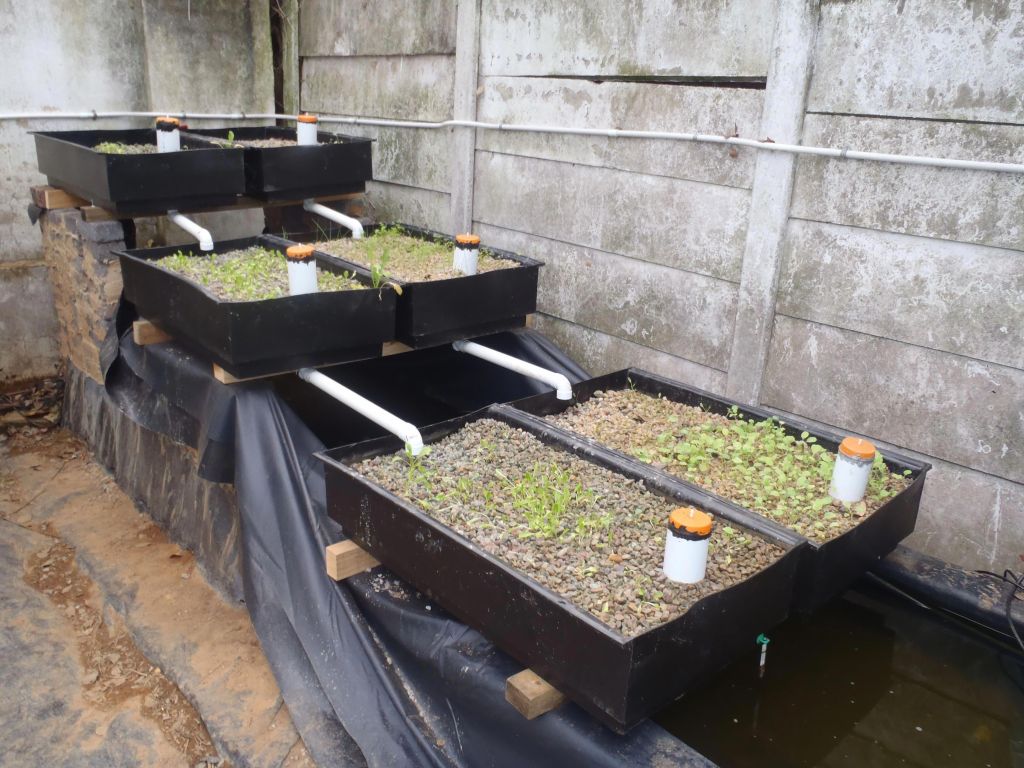Aquaponics Systems for Home Use: Unlocking the Potential of Sustainable Farming
In recent years, there has been a growing interest in sustainable farming practices. As people become more conscious of the impact their food choices have on the environment, they are seeking alternatives to traditional agricultural methods. One such alternative that has gained significant attention is aquaponics.
Aquaponics is a system that combines aquaculture (raising fish) and hydroponics (growing plants without soil) in a symbiotic relationship. The fish waste provides essential nutrients for the plants, while the plants filter and clean the water for the fish. This closed-loop system not only conserves water but also eliminates the need for synthetic fertilizers or harmful chemicals.
The benefits of aquaponics systems extend far beyond sustainability. For those living in rural areas or homesteads with limited access to fresh produce throughout the year, an aquaponic setup can provide a consistent supply of homegrown fruits, vegetables, and even protein-rich seafood.
One of the key advantages of aquaponics is its ability to be adapted to suit various space constraints and budgets. Whether you have ample backyard space or just a small balcony or patio, there’s an option available to fit your needs.
For larger spaces or homesteads with outdoor areas available, outdoor systems like deep-water culture (DWC), media-filled beds (MFB), or nutrient film technique (NFT) are popular choices. DWC involves floating plant rafts directly on water tanks where fish are kept separately. MFB utilizes media-filled grow beds where both plants and fish coexist in separate sections within one container. NFT employs shallow channels where nutrient-rich water continuously flows over plant roots before returning back to the tank.
If indoor space is limited or you live in an apartment setting, vertical towers and countertop systems offer viable options. Vertical towers utilize vertical shelves with pockets for plants stacked above each other while water cascades down through the system. Countertop systems are compact setups designed to fit on kitchen counters, providing a small but efficient way to grow herbs or leafy greens.
When it comes to choosing which plants and fish species to include in your aquaponics system, variety is key. Leafy greens like lettuce, kale, and spinach thrive in these setups due to their high nutrient requirements. Herbs such as basil, mint, or parsley also do exceptionally well. Additionally, fruiting plants like tomatoes, cucumbers, and peppers can be successfully grown with proper support and care.
In terms of fish selection for aquaponics systems at home, options vary depending on the climate and regulations in your area. Tilapia is one of the most popular choices worldwide due to its rapid growth rate and adaptability. However, other freshwater fish like trout or catfish can also be utilized if they are suitable for your specific environment.
Maintaining an aquaponics system requires some basic knowledge and regular monitoring. The pH level of the water should be kept within a specific range (usually between 6-7) for optimal plant growth. Temperature control is essential for both fish health and plant productivity; most systems require water temperatures ranging from 70°F-80°F (21°C-27°C).
Regular testing of ammonia levels in the water is necessary to ensure it remains at safe levels for fish health while providing sufficient nutrients for plant growth.
While setting up an aquaponics system may seem daunting at first glance, numerous resources are available online – including tutorials and forums – where enthusiasts share tips and experiences with one another.
The initial investment required depends on the complexity of the setup you choose as well as whether you opt to purchase pre-made kits or build everything from scratch. Nevertheless, many proponents argue that over time these systems pay for themselves by reducing grocery bills while offering unparalleled access to fresh organic produce year-round.
Aquaponics systems also provide an excellent opportunity to involve children in the process of growing their own food and teaching them about sustainable farming practices. It is a hands-on educational experience that can foster an appreciation for nature, science, and healthy eating habits.
In conclusion, aquaponics systems offer an innovative solution for individuals seeking sustainable and self-sufficient ways to grow their own food. Whether you have acres of land or just a tiny balcony, there’s an aquaponic setup suitable for your needs. By harnessing the power of nature through this symbiotic relationship between fish and plants, you can enjoy fresh produce while minimizing your ecological footprint. Embrace the potential of aquaponics at home and embark on a journey towards healthier living and greater self-reliance.


Leave a comment